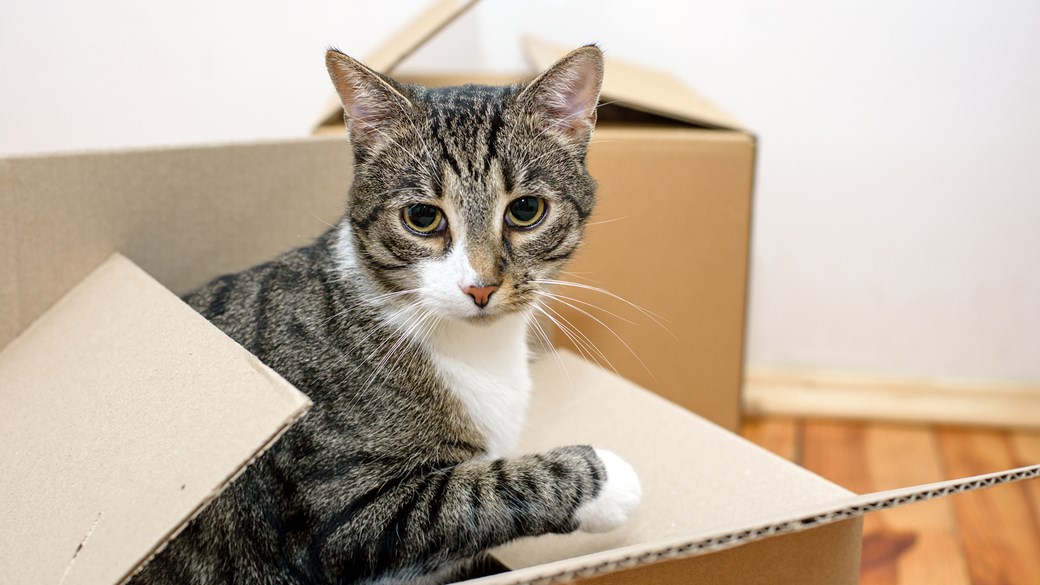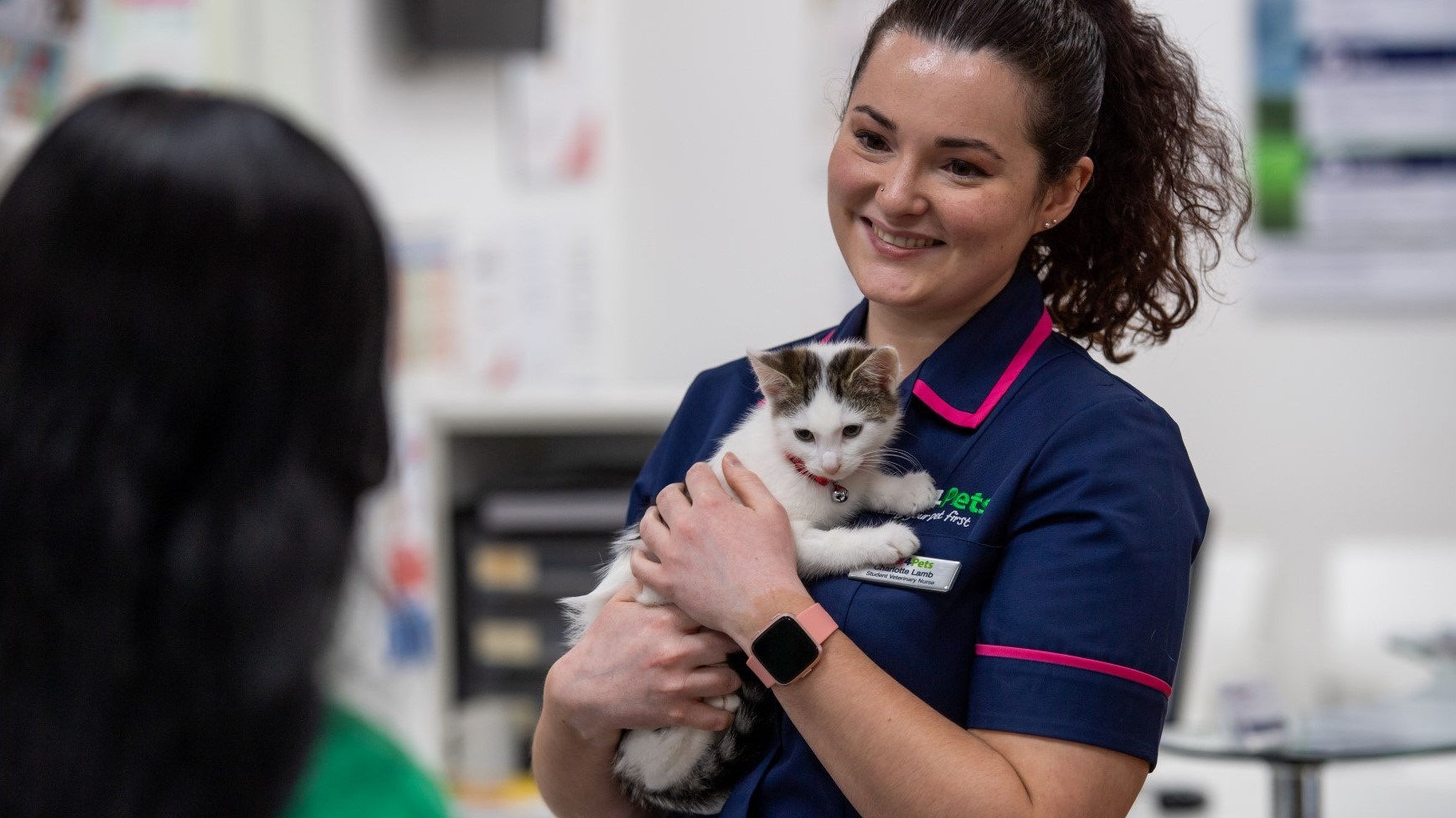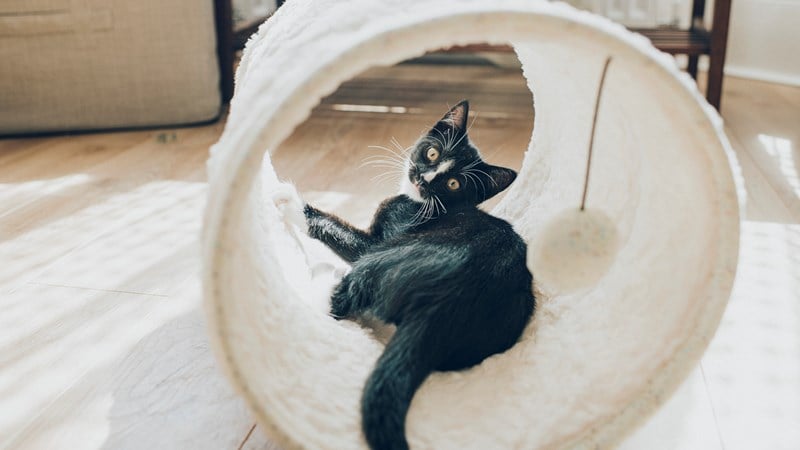
Entertaining Your Kitten
Find out how you can provide your kitten with plenty of opportunities to carry out their normal behaviour, even when they live indoors for all or part of the time!
We all love our cats and many of them are lucky enough to be given the freedom to spend most of their time however they like. It’s not always easy to be able to provide for all of a cat’s behavioural needs if we keep them indoors for any length of time, though.
Certainly, it can be safer for cats if they’re brought indoors before it gets dark and let out again in the morning, but behaviour problems are reported to be more common in indoor cats than in those who have access to the outdoors. It’s becoming better recognized that cats who spend time indoors really benefit from what’s termed ‘environmental enrichment’.
What does environmental enrichment mean and how can we provide this for our cats?
Environmental enrichment means making improvements to an animal’s surroundings that will help to satisfy their physical and behavioural needs. Thinking about what our cats’ wild ancestors would spend time doing, hunting, sleeping, climbing and maintaining territory, can help us to design opportunities for our own cats to practice these activities.
You can provide high perches for cats – limit the height until your kitten is at least six months old – as cats love to climb and they feel safe resting high up. You can have purpose-built perches and high platforms built, but cats are also very happy if they have a bed on top of a wardrobe, suitably padded with a soft blanket!
Cats are obligate carnivores, which means they need to eat meat to survive. They’re designed to be solitary hunters, who must work hard to catch their own food. Domestic cats have retained a strong behavioural need to hunt, whether they’re hungry or not. Left to their own devices, cats will spend up to 12 hours a day hunting, although all their effort is only thought to result in success and a small meal in fewer than 50 percent of hunting attempts.
Given freedom to choose how they spend their time, well-fed pet cats are thought only to spend around three hours per day hunting and they may not kill or eat their prey if they’re not hungry when they catch it.
All the free food we provide that doesn’t cost our cats any effort, can cost them their health, however. According to the Pet Food Manufacturers’ Association Obesity Report 2019, vets estimated that 44 per cent of cats were suffering from obesity. Other diseases, such as diabetes and joint disease are much more likely in overweight, unfit cats.
Some exciting progress in the way we feed cats has been in the development of puzzle feeders. These come in all shapes and sizes – you can even make your own – and allow cats to exercise their minds and bodies in order to get their food. International Cat Care has some great advice about using and making puzzle feeders that your kitten could really enjoy using!
Have you ever wondered what cats are doing when they scratch on surfaces with their front claws? ‘Stropping’, as it’s called, has more than one function for your cat. Firstly, it helps to keep claws sharp, by popping off their outer husk, and gives the muscles a stretch and a work-out; secondly, it’s a way of communicating a cat’s presence to other cats. In between the pads are glands that produce sweat and scent that’s unique to your cat.
By scratching on vertical or horizontal surfaces, your cat is advertising that this is their territory. Some cats will scratch to attract their owners’ attention, or if they’re feeling playful. When cats are outdoors, you’ll see them scratching on fence posts and trees. Indoors, the object of interest might be the corner of your new sofa, your door frame, or your carpet!
If your kitten is going to spend time indoors, they’ll need either a purpose-built or a homemade scratching area. If you decide to buy a scratching post, make sure it’s tall enough for your kitten, once grown, to scratch at full stretch. It needs to be sturdy, so that it can’t be pulled over when it’s used, and it must have vertical as well as horizontal surfaces on which to scratch. Some scratching posts also have platforms that allow your cat to climb and explore, dangly toys, or holes and boxes in which to hide.
If you’d like to make a scratching area yourself to fit the space you have, you can cover wooden panels in hardwearing offcuts of carpet and fix them to a wall or place them on the floor in an area in which your cat enjoys spending time.
Cats make playful pets! Most of the games they like to play are related to hunting in some way. As your kitten grows, you might find that they prefer certain games or types of toys.
Take a look at the cat toys our friends at Pets at Home offer here.
Some cats like to play pouncing games – try zooming your hand around in sudden, unpredictable movements under a duvet or blanket and see whether your kitten likes to ‘hunt’ it and pounce on it. Other cats like to hold ‘prey items’ in their front feet, while kicking them with their back ones. Even rolled-up pairs of socks make great prey for this game!
Some toys are great for cats to play with on their own, such as toy fish, mice and birds, or even balls that they can bat around and chase. Other types of toy are designed for you to use with your cat so that you can have some fun together. Fishing toys are great for getting your cat moving and they’re a good choice if you’d like children to be able to play with your kitten without risk of getting scratched or of handling your kitten roughly.
With the exciting array of toys available, why not choose some in different sizes, to see which your kitten prefers. Toys in natural-feeling textures, such as fur and feathers, or ones that let out little squeaks when they move, can mimic natural prey items and ones with sparkly or crinkly features can encourage cats to explore them. If you’re tempted to let your kitten play with soft toys designed for children, make sure that there are no buttons, eyes or noses that might pop off into your kitten’s mouth, and remember that kittens like to play with string or wool from knitted items. Swallowing string or something similar can be a disaster, as it tends to catch in one part of the digestive tract and cause the intestines to bunch up and become ‘cheese-wired’.
Some cats enjoy playing ‘fetch’, just like dogs do. Try screwing up paper to make a little ball and roll it for your kitten – they may chase and carry it, and some will even bring their ball back to you! Whatever game you decide to play with your kitten, end a play session with a little treat, to mimic the reward that would have come from hunting.
Games that exercise your kitten physically, while giving them the opportunity to think as though they’re hunting, will help them to grow into happy, active cats – and there’s no reason to stop the games once they have grown up!
Health Plans to keep your kitten healthy
At Vets4Pets we offer a range of Health Plans that make essential routine treatments more affordable. You'll save money on things like annual vaccinations, flea and worm treatment and routine health check-ups.

Join our free Kitten club
Join the club for expert advice and tailored offers, including £30 off our Complete Care Health Plans

Puppy & Kitten Advice
Giving your pet the best start in life begins with getting the best expert advice.
